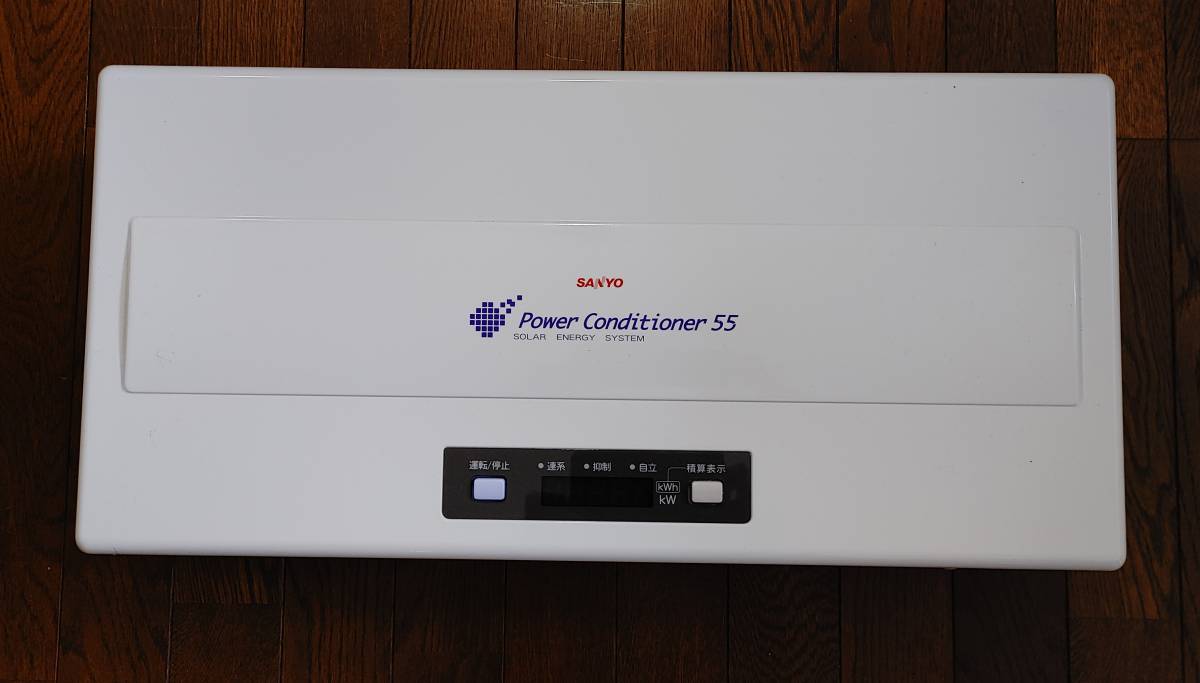-
シーンから探す
- プラモデル
- ウイスキー
- ニット/セーター
- セキュリティ
- ホビー、カルチャー
- ブレーキ
- 生活家電
- レディースファッション
- 虫類用品
- ヘルメット/シールド
- タンク
- メンズバッグ
- 農業
- 置物
- バッジ
- ペット用品
- オートバイ
- タレント/お笑い芸人
- 遊園地/テーマパーク
- 漫画
- カーペット、ラグ、マット
- その他
- カメラ、光学機器
- オーディオ機器
- 本、雑誌
- フィッシング
- キャラクターグッズ
- ジャンパー/ブルゾン
- 広告、ノベルティグッズ
- スポーツ別
- レストラン/食事券
- クラブ
- ベスト/ジレ
- 模型/プラモデル
- アイドル
- レコード
- ストーブ/コンロ
- PC周辺機器
- おもちゃ/ぬいぐるみ
- 農業
- 自転車、サイクリング
- PC周辺機器
- 大阪府の自転車
- アート、エンターテインメント
- 工具、DIY用品
- 船、ボート
-
贈る相手から探す
- その他
- キャラクターグッズ
- アート、エンターテインメント
- 観葉植物
- アンプ
- オーディオ機器
- 楽器、器材
- 工芸品
- シャツ
- その他
- クラブ
- タイヤ、ホイール
- キャラクターグッズ
- 腕時計(アナログ)
- ミラー
- オートバイパーツ
- 文学、小説
- オートバイ
- 外装、エアロパーツ
- 外国自動車用パーツ
- 事務机/学習机
- 生地/糸
- その他
- パーツ
- 食器
- 着物
- その他
- 美術品
- 洋服タンス/押入れ収納
- 外装、エアロパーツ
- キャラクターグッズ
- ブランド別
- 棚/ラック
- コミック/アニメ
- バングル/リストバンド
- リュック/バックパック
- コレクション、趣味
- コスプレ
- 古書、古文書
- アート、エンターテインメント
- 電装品
- リュック/バックパック
- 電装品
- フィギュア
- 車外アクセサリー
- 宮城県のその他
- 船、ボート
- 犬用品
- ニット/セーター
- 農業
- スズキ
- カテゴリから探す
- おまとめ注文・法人のお客様
日極稀少和ジャズ初回盤 山本邦山 - 寒月 都山尺八本曲名曲集成 LPレコード JRZ-2575-6 1978 赤Lbl. 中尾都山 Kangetsu Hozan Yamamoto
-
商品説明・詳細
-
送料・お届け
商品情報
残り 6 点 31,500円
(608 ポイント還元!)
翌日お届け可(営業日のみ) ※一部地域を除く
お届け日: 11月29日〜指定可 (明日17:00のご注文まで)
-
ラッピング
対応決済方法
- クレジットカード
-

- コンビニ前払い決済
-

- 代金引換
- 商品到着と引き換えにお支払いいただけます。 (送料を含む合計金額が¥296,521 まで対応可能)
- ペイジー前払い決済(ATM/ネットバンキング)
-
以下の金融機関のATM/ネットバンクからお支払い頂けます
みずほ銀行 、 三菱UFJ銀行 、 三井住友銀行
りそな銀行 、ゆうちょ銀行、各地方銀行 - Amazon Pay(Amazonアカウントでお支払い)
-


































レーベル:
RCA JRZ-2575~6
フォーマット:
レコード, LP, Album, Stereo, Gatefold
国:
Japan
リリース済み:
1978
ジャンル:
Jazz, World & Country
スタイル:
Free Jazz, Free Improvisation, Contemporary
メンバー ZAN
山本邦山
川村泰山
石垣征山
酒井師山
収録曲 Ex
1 寒月
1911年作曲。全体は3つの楽章で構成されている。第1、2楽章のソロパートでは、すべての音が冬の夜に輝く月のすさまじい情景を表現している。鋭い高音で始まる第2楽章が特に印象的である。第3楽章では一転して、最初の2つの楽章とは対照的な構成。ゆっくりとしたテンポで3部構成のアンサンブルで演奏され、聴き手に落ち着きと静けさを与える。
2 湖上の月
1922年作曲。第1楽章はソロで始まり、ゆっくりとしたテンポでアンサンブルが続く。フレーズの最後にトレモロが頻繁に使われ、ソロとアンサンブルが入れ替わるのがこの楽章の特徴である。第2楽章は3-8拍子で書かれており、軽快なテンポで進行する。湖面に映る月の光がさざ波のように震えている様子が描かれている。
3 岩清水
1904年京都の石清水八幡宮で中尾都山が作曲した都山流の名作である。この曲は主に尺八の独奏のために書かれているが、第3楽章は2パートのアンサンブルで演奏される。全曲のクライマックスは第2楽章で、解釈者には様々なテクニックが要求される。第1楽章は深い森の中にある八幡宮の秋の姿、第2楽章は岩の間を流れる春の水の情景、第3楽章は川に集まる吹き流しの情景を描いている。
4 夕月
中尾都山は、月をテーマにした作品を数多く作曲している。1927年4月に作曲された。第1楽章は4拍子でゆっくりとしたテンポで書かれており、甘美なテーマで始まり、様々な形で交互に数回現れる。第2楽章は3-4拍子で書かれている。第2楽章は3-4拍子で書かれており、テンポはどんどん速くなり、台詞もどんどん増えていく。主題の再来を思わせる短いコーダが印象的。
1 木枯らし
この曲は1922年に作曲された。尺八の名曲であり、独奏のための短い曲である。
古典的な落ち着きと味わいがあり、独奏曲の中ではユニークな位置を占めている。
2 もみじ
この2部構成のアンサンブルは、1929年に京都の西に位置する高尾で作曲された。3つの楽章とコーダで構成されている。第2楽章は珍しい5-8拍子で書かれており、聴く者に斬新な印象を与える。興味深いのは、楽譜には「3(3)+2(2)」の5拍子が記されているが、実際にはアップビートから数えて「2(2)+3(3)」と耳に聞こえることだ。
3 朝風
1938年3月に作曲された。第1楽章はソロのための荘厳な曲である。旋律のクライマックスは第1楽章の中盤に現れる。第2楽章はソロの導入部から始まり、2パートのアンサンブルが続く。三連符や半拍子が頻繁に登場し、「てごと」(箏曲の間奏曲、または江戸時代に上方で生まれたバラード「地歌」)のような器楽曲の楽しい印象を与え、まさに朝の風のような爽やかさがある。
4 青海波
中尾藤山の処女作は1904年7月に作曲された。4つの楽章で構成されている。
最初の2つの楽章はソロのために書かれている。この2つの楽章はリズミカルではないが、「地唄」のような味わいのあるメロディーを持っている。第1楽章では雄大な海の景色が、第2楽章では敵の陣地に忍び込む戦士たちの様子が描かれている。第3楽章では一転して2部構成のアンサンブルで、明るいメロディーがふんだんに盛り込まれている。
1 Kangetsu寒月
This composition was written in February 1911. The entire composition consists of three movements. In solo parts of the first two movements every note features the tremendous scene of the moon shining in a winter night. The second movement, which begins with a keen high. pitched tone, is especially impressive. The composition makes a complete change in the third movement which contrasts with the first two movements. It is performed by ensemble in three parts at slow tempo and gives calmness and tranquility to listeners.
2 Kojo no Tsuki (Tozan)湖上の月
This composition was written in late autumn of 1922. The first movement begins with solo which is followed by ensemble at slow tempo. Frequent use of tremolo at the end of each phrase and the change of solo and ensemble are the characteristics of this movement. The second movement is written in three-eight time and has a lilting tempo. It features the scene that the moonlight reflecting on the surface of the lake trembles like ripplet.
3 Iwashimizu岩清水
TOZAN NAKAO composed this masterpiece of Tozan-ryu (the school of Tozan) at Iwashimizu- Hachimangu shrine in Kyoto in October 1904. This composition is mainly written for solo Shakuhachi, but the third movement is played by ensemble in two parts. The climax of the entire composition is the second movement which requires the interpreter varied techniques. The first movement features the autumnal appearance of Hachimangu shrine in a deep forest, the second movement the scene of spring water"s streaming through rocks, and the third movement the scene of streamers" gathering to a river.
4 Yuzuki夕月
TOZAN NAKAO composed many works with moon as their theme. This composition was written in Tokyo in April 1927. The first movement, written in four-four time and at slow tempo, begins with a sweet theme which appears several times alternately in varied forms. The second movement is written in three-four time. The tempo become faster and faster, and the dialogue becomes more and more frequent. The short coda which reminds us of the recurrence of the theme is very impressive.
1 Kogarashi木枯
This composition was written in 1922. This rather short piece for solo is a masterpiece of Shakuhachi music.
Filled with classical repose and flavor, it occupies a unique position in pieces for solo.
2 Momijiもみじ
This ensemble in two parts was written in Takao in the west of Kyoto in 1929. This composition consists of three movements plus coda. The second movement is written in rare five-eight time, which gives novel impression to listeners. It is of great interest that, although the score indicates five time of "three (3) plus two (2)", but it actually sounds to our ears "two (2) plus three (3)" counting from the up beat.
3 Asa Kaze朝風
This composition was written in March 1938. The first movement is a solemn piece for solo. The climax of melodies appears in the middle of the first movement. The second movement begins with the introduction of solo which is followed by ensemble in two parts. Frequent appearance of triplet and semiquaver gives to listeners delightful impression of instrumental music like "Tegoto" (interlude of Koto music or "Jiuta", ballad originating in Kamigata (district of Kyoto and Osaka) in Edo era), which is exactly refreshing as morning breeze.
4 Seikaiha青海波
This maiden work by TOZAN NAKAO was composed in July 1904. It is composed of four movements.
The first two movements are written for solo. These two movements are not so rhythmic, but have melodies with "Jiuta" like flavor. The first movement features the magnificent view of the sea, and the second movement the scene of warriors slipping in the enemy"s camp. The composition makes a complete change in the third movement which is performed by ensemble in two parts and is abundant in bright melodies.